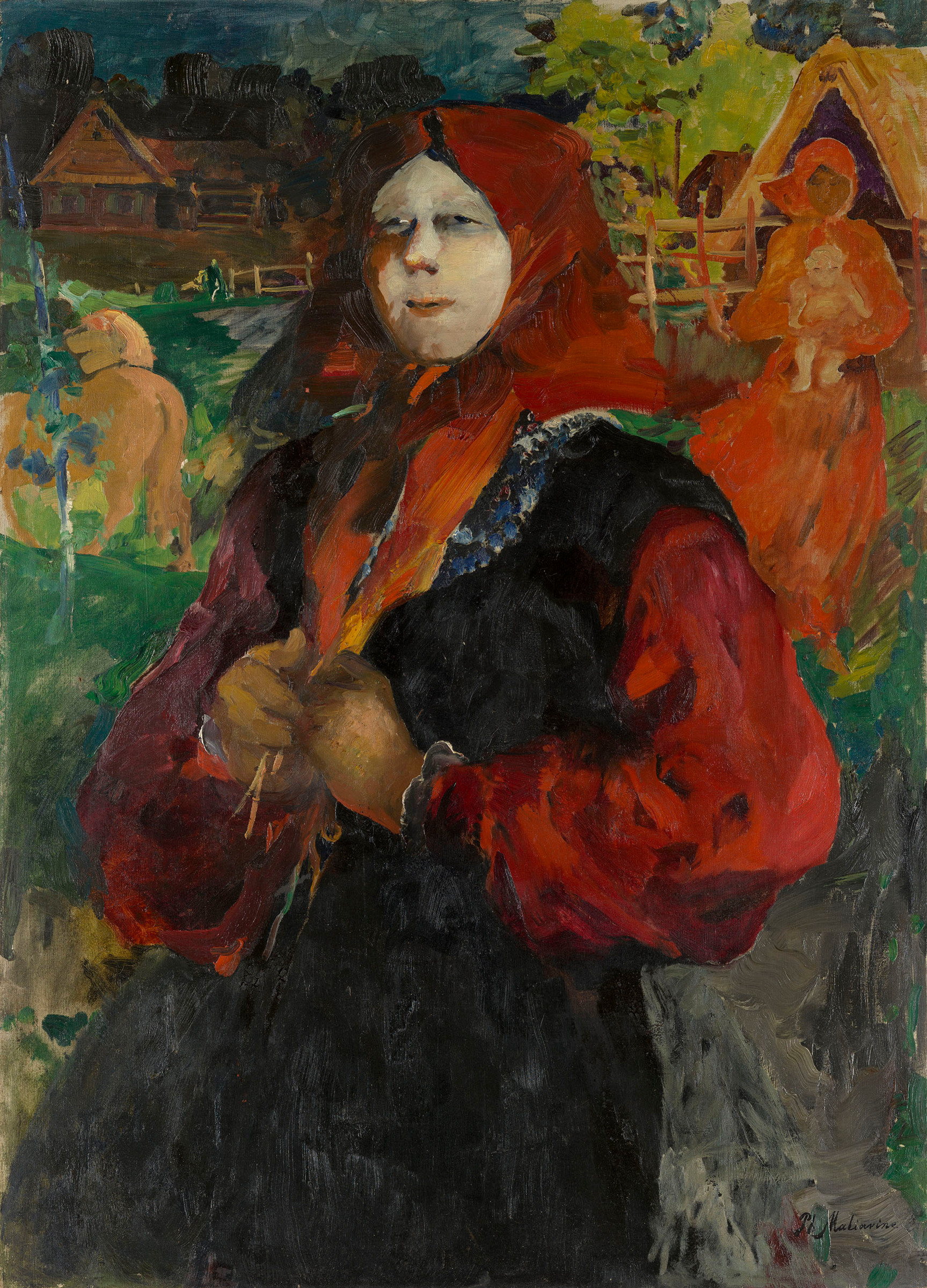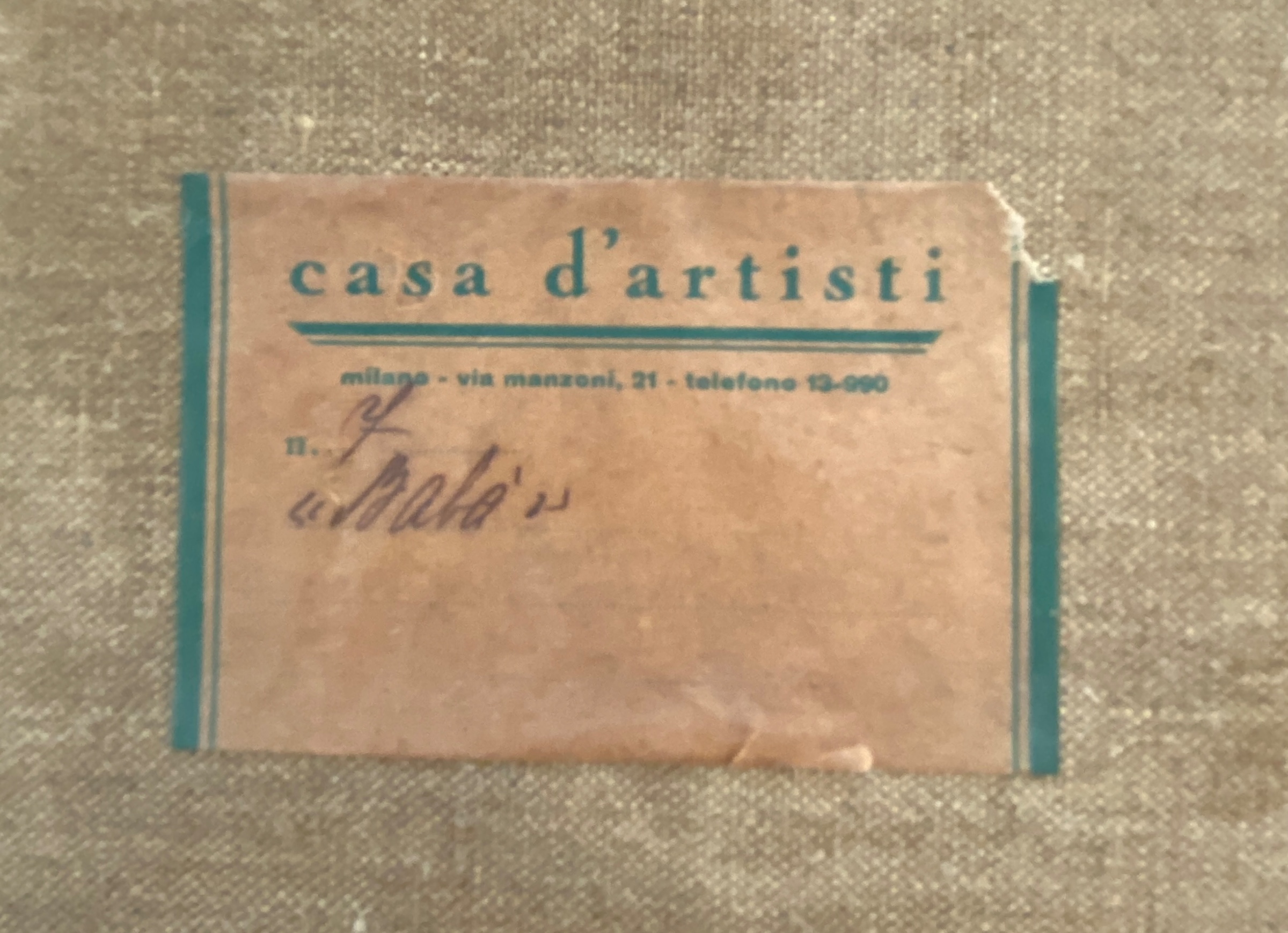ÉCOLE DE PARIS AND OTHER MASTERS
4 December 2024

* 9. MALIAVIN, PHILIPPE (1869-1940)
Portrait of a Peasant Woman, signed.
Oil on canvas, 135.5 by 97.5 cm.
175,000-250,000 GBP
Provenance: The Russian Sale, Sotheby’s London, 10 May 2000, lot 75.
Exhibited: Casa D'Artisti, Milan, 1931 (label of the reverse).
While still in Russia, Philippe Maliavin had won fame as an authentic Russian artist. His joyful, colourful canvases introduced a special mood into any art exhibition and came to embody the true Russian temperament. His rich, "sprawling" painterly style itself embodied an innovative attitude towards technique, free from derivation and feeble imitation of foreign art. A taste for national flavour became a distinguishing mark of all the artist's paintings.
Portrait of a Peasant Woman which is being offered for auction, is particularly life-like, profound and psychologically perceptive. It numbers among the most outstanding works that Maliavin produced in emigration and was considered for acquisition by the Government of France. MacDougall’s are especially proud to introduce this undisputable masterpiece by an outstanding Russian artist into the current sale.
The present work is a large and festive portrayal of a peasant woman dressed in the eye-catching scarlet chintz shirt, which became the trademark of Maliavin’s oeuvre. Already in 1904, Alexander Benois wrote about the artistic skills of the young artist as “a singer of Russian peasant women. He paints them in all their ugly majesty and all the richness of their dazzling colours. He is in love with the ‘Russian peasant woman’, like a pagan is in love with his idol.<…> Maliavin created an idol for himself, to whom he bows and censes incessantly.” (A. Benois, Russian School of Painting, Golike and Wilborg, 1904, p. 105)
This is exactly how the handsome stout peasant appears in the present work, standing against the backdrop of the village outskirts, clutching the ends of her scarlet scarf, as if ready to break into dance at any moment. In her dignified posture, and in the cunning, foreboding squint of her eyes, which are especially expressive on her creamy, plump face, one feels some kind of earthy strength and an irrepressible prowess. It is these Chthonic features that emerge through the magnificent symphony of Maliavin’s painting and make the composition of the present lot a superb example of the main theme during the artist’s emigrant period. Already in his early work, the artist managed to feel and create the image of a Russian peasant woman, based on a forced consistency of folklore, colouristic fervour, and sense of life and expressiveness, which became associated with the image of primary Russia. Perhaps this is why Alexandre Benois wrote about Maliavin’s work as a student: “Finally we see a talent not bound by a Chinese slipper, but boldly and joyfully prancing about. Repin and his entire system deserve tribute and honour for not extinguishing this flame' (O. A. Zhivova, Philip Andreevich Maliavin, 1967, p. 68).
In emigration, the peasant subjects in Maliavin’s work appeared to embrace a rather exaggerated pagan characteristic. Change in the artist's vision did not occur because the artist was left without his models. Rather, Maliavin now possibly saw in the character of the Russian peasantry the “senseless and merciless” nature of the Russian rebellion and the barbarity of the revolution. The festive chintz flame of exuberant village fun, red maidens, red cheeks and sarafans were replaced by the wild, intoxicating glow of the red rooster. The gaze and Scythian character of his women lit up with an unkind light, and their outfits flared up with a fire, the whirlwind of which forever carried away old village traditions and true Russia itself. This latent message was perceived by the artist’s contemporaries as a symbol of the half-Asian, eerily colourful “Red Russia'”. The sentiment is also noticeable in Portrait of a Peasant Woman, however, it does not dominate and despite being in tune with the time and artist’s mood the figurative structure of the composition is splendidly harmonious.
Exhibition label on the verso of the present lot.

Notes on symbols:
* Indicates 5% Import Duty Charge applies.
◎ Indicates the lot is located outside the UK. Successful bidders would collect their lots outside the UK after payment.
Ω Indicates 20% Import Duty Charge applies.
§ Indicates Artist's Resale Right applies.
† Indicates Standard VAT scheme applies, and the rate of 20% VAT will be charged on both hammer price and premium.